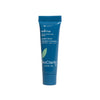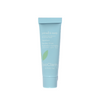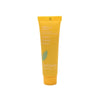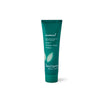How To Prevent Acne Scars Before They Form
By Abby Vinas
Acne Treatment
•
0 Comments

Long after acne breakouts clear up, skin can be left with deep scars. When it comes to skin care, it's all about understanding the cause of acne and learning prevention tips to help avoid scarring. We'll give you various ways on how to avoid and stop acne scars. Luckily, recent advancements in acne therapy and treatment have helped those with acne prevent and treat their pre-existing scars.
Types of Acne Scars
Acne scarring occurs in 95 percent of all people with acne vulgaris according to a study posted by The Journal of Clinical and Aesthetic Dermatology.There are three main type of acne scars that most people encounter:
- Boxcar Scar: This type of scar features broad depressions that have sharply defined edges.
- Ice-Pick Scar: An Ice-pick scar is narrow and deep, causing a pitted appearance in the skin’s surface.
- Rolling Scar: These scars have broad depressions and sloping edges.
How to Get Rid of Acne Scars
Acne scars are an unfortunate side effect of severe acne breakouts. Getting rid of acne scars can be difficult, but the right preventive measures and treatment options can help you remove existing scars and prevent new scars from forming. If you want to get rid of your acne scars, there are a variety of therapy options, including:
- Steroid treatments
- Punch Excision
- Dermabrasion
- Subcision
- Fillers
- Laser Treatment
Getting Rid of Certain Types of Acne Scars
Before you can effectively get rid of your acne scars, it’s important to understand and define the acne type you’re struggling with to determine which treatments are best suited for your skin.
- Atrophic and Rolling Scars: Patients often get rid of acne scars in this category through augmentation techniques, skin needling, laser resurfacing, and dermabrasion.
- Hypertrophic Scars: Getting rid of these acne scars may require topical steroid injection, silicone gel application, skin needling, cryotherapy, and surgical revision.
- Boxcar Scars and Icepick Scars: Patients have found they can remove acne scars of this variety through laser resurfacing, dermabrasion, punch grafting, subcision, and excision.
Regardless of skin type, acne scar prevention is key. Whether you have acne-prone skin or deal with the occasional breakout, anyone with an acne lesion can develop scarring. If you’re looking for ways to alleviate the appearance of acne scars and avoid future acne scarring, use these tips to keep your skin smooth and clear.
Preventing Acne Scars
Almost 10 million Americans deal with some type of acne scarring each and every year, so prevention is key. The statistics can be a bit frightening; over 95 percent of all acne patients will develop some sort of scarring to varying degrees. However, the earlier the treatment of acne, the less likely it is that you’ll develop scars from an acne lesion.
The best way to prevent acne scars is to begin treatment right after acne starts to appear. This will prevent further severe acne from developing and help circumvent worse scars.
Clearer skin in as little as two weeks.
3-step ritual with nutrient rich botanicals and the power of Floralux® to treat, soothe, and calm skin.
Learn More
How do Acne Scars Form?
Those with severe acne are more prone to acne scarring. As the sebaceous gland produces excess sebum, it gets clogged with dead skin cells and P. acnes bacteria on its way out of the pore. Should a blockage occur, the pore swells with infectious matter, with the cyst eventually rupturing deep within the dermis, destroying the surrounding skin tissue; it is then attacked by white blood cells tasked with fighting off infection.
Hypertrophic Scarring
As the wound heals itself, the body may produce an excess of collagen, a fibrous protein that is designed to give the skin more flexibility and strength. However, too much collagen can result in a mass of raised tissue that sits on the skin’s surface. This is known as keloid or hypertrophic scarring. This is seen most often on the male torso.
Atrophic Scarring
There are also atrophic scars, which are depressions in the skin’s surface. These develop when there is a loss of skin tissue in the area, thanks to the destruction of collagen. The skin surface that overlies the collapsed pore has no support, resulting in a depression in the skin. This is common in both men and women, and is most often noticed on the face.
Another less frequently seen skin change caused by acne scarring is what is called follicular macular atrophy. This is exhibited through tiny white bumps that surround the hair follicles found on the upper torso or upper arms. These solid white bumps can be permanent.
The more inflammation your skin experiences, the more likely it is you’ll develop acne scarring. Papules, pustules, and cysts often result in acne marks and scarring if left untreated, while whiteheads, blackheads, and other non-inflammatory acne lesions don’t cause lasting marks. The deeper a breakout, the more likely you are to scar.
Acne Marks vs. Acne Scars
It’s important to understanding the distinction between an acne mark and acne scars. Some acne patients deal with post-inflammatory hyperpigmentation (PIH). Many acne patients assume that the dark spots after treatment of an acne lesion is scarring, but in fact, this is what’s known as post-inflammatory hyperpigmentation. This is simply a remnant of the skin’s natural inflammatory process. Those with darker skin may notice marks that are brown or black, while those with paler skin tones may see a color change that is pink, red, or even purple in color. You may find that these marks seem to temporarily disappear when the skin surface is gently stretched.
Post-inflammatory hyperpigmentation marks tend to fade over a period of time, generally within three to six months. There are treatment options that can expedite the healing process, but it’s most important to avoid excess sun exposure. The sun’s ultraviolet rays can darken the skin, causing abnormally colored patches of skin to discolor even further. Be sure to always apply SPF before heading out of the house, even when the weather is overcast.
In contrast, true acne scarring can be permanent. Acne scars are visible indentations in the skin’s surface due to collagen damage. Acne scarring can present itself in a variety of scar shapes and forms.
Don’t Pick at Your Skin
One of the best pieces of advice any dermatologist of skin care expert can provide is instructing patients not to pick at their skin. While it can be tempting to pop a pimple, this can greatly increase the likelihood of acne scarring. Many people question how to get rid of pimples, however, this is not the recommended way. As you pick or squeeze at your pimples and acne lesions, bacteria and other debris can make their way deeper into the dermis. This can quickly spread infection and ruin surrounding tissue, leading to excess inflammation. The more inflammation you have, the worse your scarring is likely to be. Let pimples be, and instead of picking at them, be sure to remain consistent with your cleansing regimen.
Treating Acne Scars
A clinical study posted by the National Institute of Health determined there are many varying ways to treat the appearance of acne scars, ranging from topical ointments to laser resurfacing.
Steroid Treatments
Steroid injections can reduce inflammation and help flatten out thick scars to help the skin’s surface look softer and more even. You must receive these injections from a licensed dermatologist or medical professional. Keep in mind that steroid acne treatments won’t improve the skin’s texture, but can help diminish the appearance of acne.
Punch Excision
Punch excision can be a wonderful method for diminishing ice-pick acne scars. A punch excision closes a scar with sutures, allowing the dermatologist to bring the dermis back together in a uniform line. This procedure can leave behind a faint, tiny scar, but this can often be eradicated with dermabrasion, laser resurfacing, or chemical peels.
Dermabrasion
This treatment method involves anesthetizing and freezing the affected area of skin, then applying a sharp rotating blade. This sheers away damaged tissue.
Subcision
This procedure requires a dermatologist to undermine an acne scar with a needle or scalpel in order to break apart fibrous bands of scar tissue. Once these bands are broken, tension is depleted and new collagen can form for a smoother surface. The Baylor College of Medicine states that there is usually no downtime, however, bruising lasting 1-2 weeks may be seen. This technique is often best combined with other techniques, such as laser treatment.
Fillers
Many acne patients choose to utilize fillers for their acne scar treatments. Fillers can help fill in the shallow depressions left behind, and these dermal fillers can provide instant results that last up to a year. There are a variety of filler substances used to perform this procedure; some dermatologists can even transplant a patient’s fat from one part of the body into the scar.
Laser Treatment
Many with severe acne scarring look into laser resurfacing options. In past decades, a continuous wave carbon dioxide laser was used to resurface the skin. The laser would remove sun-damaged skin layer by layer to allow new skin to grow through. Unfortunately, this resurfacing method can result in side effects, including skin discoloration, eczema, infections, and swelling. To circumvent these side effects, pulsed and scanned carbo dioxide laser systems were used to better control the laser’s effects.
There are also non-ablative laser systems, which target the dermis while leaving the epidermis intact. These systems are safer with fewer side effects, but are not always as effective. Laser resurfacing can greatly improve the appearance of acne scars, but very deep scars cannot be completely removed.
Chemical Peels
Chemical peels are a popular treatment option for acne scarring. Skin care professionals apply a strong acid on the skin to help peel off the top layer and reduce the appearance of acne scars. One of the most common chemical peels involves glycolic acid. This solution removes the top layer of skin, allowing a new, fresh layer to grow through. Chemical peels aren’t right for every skin type or scar. Those with darkly pigmented skin should avoid peels, as it can brighten the pigmentation of the newly healed skin, creating a huge contrast between that spot and the rest of the skin’s surface.
Many times acne patients will find that their scars can best be treated through a combination of several of the above methods. Almost everyone with acne deals with acne marks and scarring at some point, but with these tips and constantly improving acne treatment methods, it’s easier than ever to prevent and treat scars.
What You Can Do About Acne Scarring
If you’re considering acne scar treatment for dark marks and indentations left behind after breakouts, it’s also important to take your current skin care regimen into consideration. If you're using home remedies, you may be making your acne worse. Does hydrogen peroxide work on acne? No, and it can burn the skin and make your scars worse. Can sulfur cure acne? It can help, but it can also dry out the skin and leave it in worse shape. Is your diet and acne related? Yes. The best way to treat acne scarring is through prevention. Be sure to cleanse your face daily with a gentle acne treatment solution like bioClarity's Clear Skin Routine, designed to help keep your face clean and clear without harsh side effects.

Abby Vinas
Abby Vinas has long been an active member of the holistic health community, advocating in favor of its benefits to both our physical and emotional well-being. Her commitment to leading a healthy lifestyle has made her an authority on self-care practices. Abby is passionate about fitness, nutrition, and proper skincare, and is also an avid lover of avocado toast and dog-petting.












